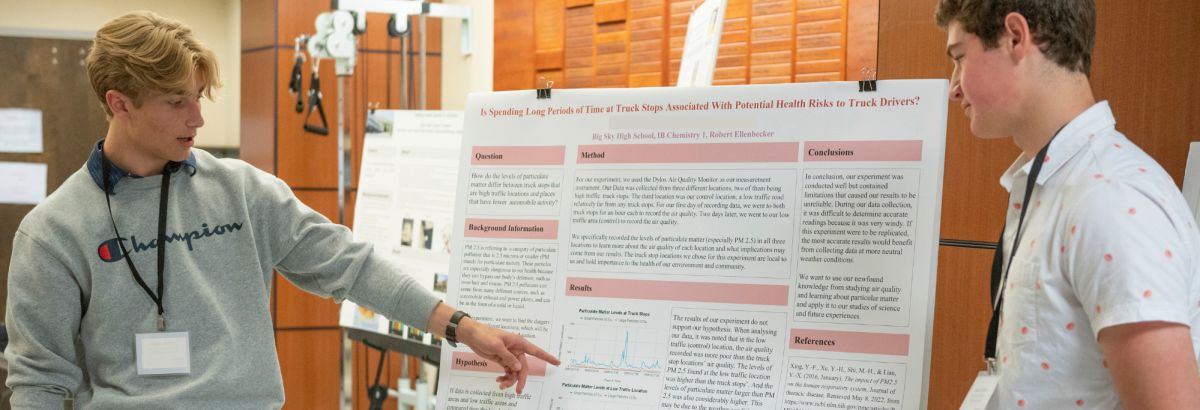
Project Summary / Abstract
Climate change impacts are accelerating throughout the world. In the western US and Alaska, we are seeing significant increases in the frequency of wildfires, with smoke impacting our rural communities nearly every summer and fall. Children growing up these rural communities face unique challenges, and may not have straightforward access to educational experiences that cultivate knowledge and interest in science, technology, engineering, and mathematics (STEM) careers. There is also a lack of educational opportunities related to the field of public health in our rural states, which are desperately needed as we address the emerging climate change crisis. Leveraging an existing network of 26 high schools located throughout rural areas of Montana, Idaho, and Alaska, we will add an additional 20 middle schools as we provide research opportunities for students to explore the topics of climate change, wildfires, and public health. With an evaluation plan consisting of a mixed method design, we will test the overall hypothesis that our program can be successfully utilized in rural areas to increase middle school and high school students’ interest in STEM careers and research. We will test this hypothesis through three Aims: Aim 1) facilitate remote learning and STEM research opportunities for students, Aim 2) facilitate student learning and career preparation through science communication practices, and Aim 3) provide teachers professional development to support their delivery of public and climate health curriculum. With SEPA funding, we intend to provide educational opportunities for a projected 1,200 students each year, with most of these students living in rural areas, including American Indian / Alaska Native communities.
-
AIM 1
Aim 1: Facilitate remote learning and STEM research opportunities for students.
Aim 1a. Develop climate change / public health curriculum for implementation into high schools.
Aim 1b. Revise the high school curriculum for implementation into middle schools.
Aim 1c. Develop a middle school network in rural areas of Montana, Idaho, and Alaska.
Aim 1d. Facilitate student research related to climate change, wildfires, and public health.
Aim 1 hypothesis: student-driven research with a focus on climate change and public health will facilitate their engagement in related STEM fields and educational / career paths.
-
AIM 2
Aim 2: Facilitate student learning and career preparation through science communication practices.
Aim 2a. Based on their research projects, students will develop presentations using writing, data visualizations, and other science communication tools.
Aim 2b. Students will give presentations at one or more public venues including an in-person symposium, online settings, or community settings.
Aim 2 hypothesis: student engagement and learning in public and climate health will be enhanced by producing and delivering science communication to audiences.
-
AIM 3
Aim 3: Provide teachers professional development to support their delivery of public and climate health curriculum.
Aim 3a. Offer in-person summer workshops to support Missoula teachers in delivering Aim 1 curriculum.
Aim 3b. Offer online summer workshops to support distance teachers in delivering Aim 1 curriculum.
Aim 3c. Offer an online micro-credential in Teaching Public Health.
Aim 3 hypothesis: teachers who participate in the workshops and / or the micro-credential will gain increased content knowledge and self-efficacy for teaching public and climate health to their students.
THE SCHOOL OF PUBLIC AND COMMUNITY HEALTH SCIENCES
Project Title: Empowering Rural Students to Address Public and Climate Health Through Research
Funding Agency: Science Education Partnership Award (SEPA), National Institutes of Health, National Institute of General Medical Sciences.
Grant Number: 1 R25 GM154354-01
Principal Investigator :
Tony Ward, PhD
School of Public and Community Health Sciences
University of Montana
Phone: (406) 243-4092
Tony.ward@umontana.edu
Join our Instagram group!

